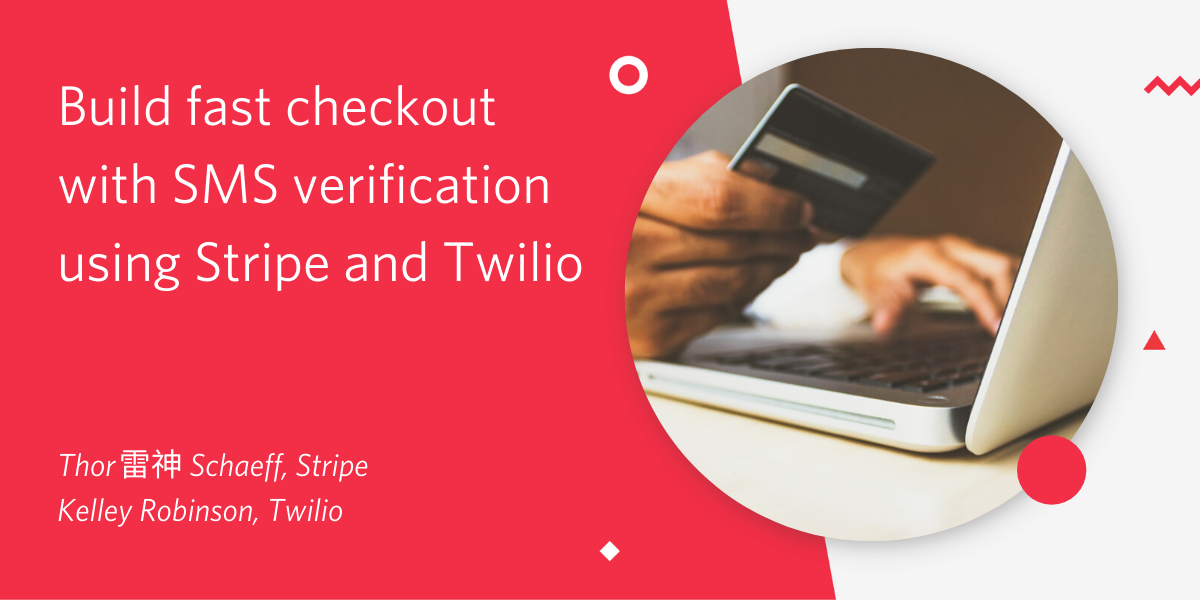Build fast checkout with SMS verification using Stripe and Twilio
Time to read: 1 minute
April 17, 2020
Written by

Stripe and Twilio have teamed up to build a sample application that shows you how to securely collect and store payment details from your customers and use Twilio Verify to send returning customers an authentication code before charging their saved card details.
Demo and resources
- View the sample on the Twilio CodeExchange
If you prefer to watch this tutorial, you can find a recording of how to set up the sample application on the Stripe Developers YouTube channel:

The sample application comes with two backend implementations one in JavaScript (Node) and one in Python (Flask). In this tutorial we outline how to set up the Node.js backend. You can find instructions for running the Python Flask server here.
Creating the sample with the Stripe CLI
Setting up the environment variables
A look at the source code
Setting up an international phone number input field
Look up the phone number on the server
Collect and store the customer's payment details
Send the verification code
Check the verification code
Charge the customer
Listen to Stripe webhook events
We hope you found this tutorial helpful ❤️ If you have any feedback or questions you can reach the authors on Twitter:
Related Posts
Related Resources
Twilio Docs
From APIs to SDKs to sample apps
API reference documentation, SDKs, helper libraries, quickstarts, and tutorials for your language and platform.
Resource Center
The latest ebooks, industry reports, and webinars
Learn from customer engagement experts to improve your own communication.
Ahoy
Twilio's developer community hub
Best practices, code samples, and inspiration to build communications and digital engagement experiences.


.png)